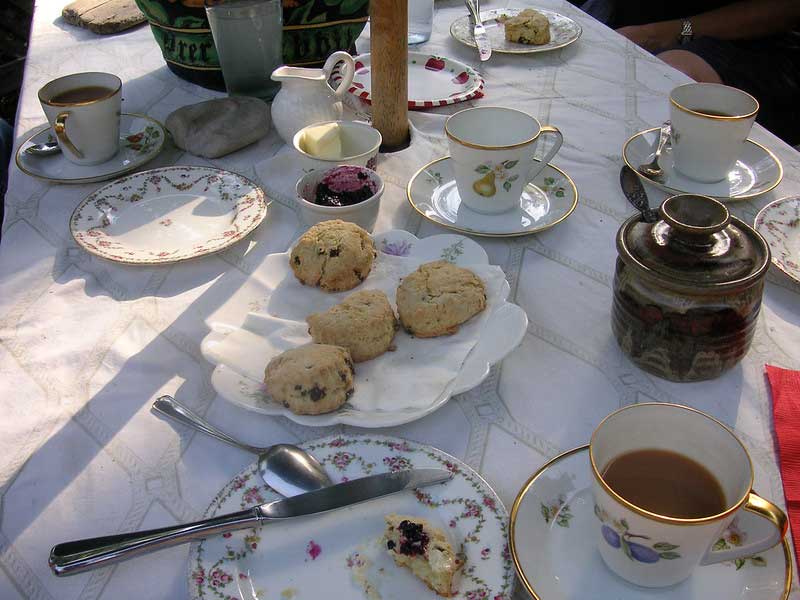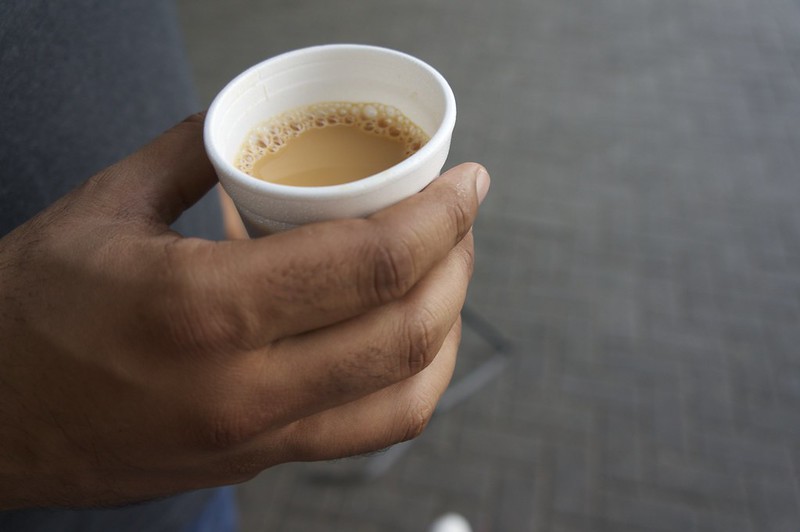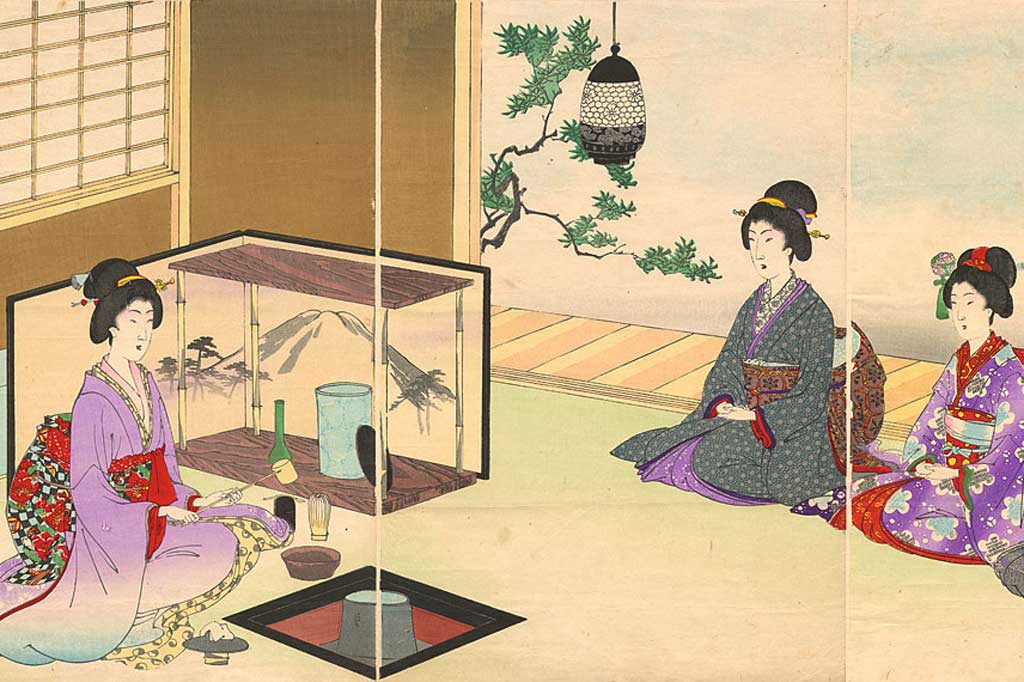Tea may be consumed early in the day to heighten calm alertness; it contains L-theanine, theophylline, and bound caffeine (sometimes called theine). Decaffeinated brands are also sold. While herbal teas are also referred to as tea, most of them do not contain leaves from the tea plant. While tea is the second most consumed beverage on Earth after water, in many cultures it is also consumed at elevated social events, such as the tea party.
Tea ceremonies have arisen in different cultures, such as the Chinese and Japanese traditions, each of which employs certain techniques and ritualised protocol of brewing and serving tea for enjoyment in a refined setting. One form of Chinese tea ceremony is the Gongfu tea ceremony, which typically uses small Yixing clay teapots and oolong tea.
In the United Kingdom 63% of people drink tea daily and it is perceived as one of Britain's cultural beverages. It is customary for a host to offer tea to guests soon after their arrival. Tea is consumed both at home and outside the home, often in cafés or tea rooms. Afternoon tea with cakes on fine porcelain is a cultural stereotype. In southwest England, many cafés serve a cream tea, consisting of scones, clotted cream, and jam alongside a pot of tea. In some parts of Britain and India 'tea' may also refer to the evening meal.

Ireland has long been one of the biggest per capita consumers of tea in the world. The national average is four cups per person per day, with many people drinking six cups or more. Tea in Ireland is usually taken with milk or sugar and is slightly spicier and stronger than the traditional English blend.
Tea is prevalent in most cultures in the Middle East. In Arab culture, tea is a focal point for social gatherings.
Turkish tea is an important part of that country's cuisine, and is the most commonly consumed hot drink, despite the country's long history of coffee consumption. In 2004 Turkey produced 205,500 tonnes of tea (6.4% of the world's total tea production), which made it one of the largest tea markets in the world, with 120,000 tons being consumed in Turkey, and the rest being exported. In 2010 Turkey had the highest per capita consumption in the world at 2.7 kg. As of 2013, the per-capita consumption of Turkish tea exceeds 10 cups per day and 13.8 kg per year. Tea is grown mostly in Rize Province on the Black Sea coast.
In Iranian culture, tea is so widely consumed, it is generally the first thing offered to a household guest.
Russia has a long, rich tea history dating to 1638 when tea was introduced to Tsar Michael. Social gatherings were considered incomplete without tea, which was traditionally brewed in a samovar, and today 82% of Russians consume tea daily.
In Pakistan, both black and green teas are popular and are known locally as sabz chai and kahwah, respectively. The popular green tea called kahwah is often served after every meal in the Pashtun belt of Balochistan and in Khyber Pakhtunkhwa, which is where the Khyber Pass is found. In central and southern Punjab and the metropolitan Sindh region of Pakistan, tea with milk and sugar (sometimes with pistachios, cardamom, etc.), commonly referred to as chai, is widely consumed. It is the most common beverage of households in the region. In the northern Pakistani regions of Chitral and Gilgit-Baltistan, a salty, buttered Tibetan-style tea is consumed.
In the transnational Kashmir region, which straddles the border between India and Pakistan, Kashmiri chai or noon chai, a pink, creamy tea with pistachios, almonds, cardamom, and sometimes cinnamon, is consumed primarily at special occasions, weddings, and during the winter months when it is sold in many kiosks.
Indian tea culture is strong – the drink is the most popular hot beverage in the country. It is consumed daily in almost all houses, offered to guests, consumed in high amounts in domestic and official surroundings, and is made with the addition of milk with or without spices, and usually sweetened. At homes it is sometimes served with biscuits to be dipped in the tea and eaten before consuming the tea. More often than not, it is drunk in "doses" of small cups (referred to as "Cutting" chai if sold at street tea vendors) rather than one large cup.

In Burma (Myanmar), tea is consumed not only as hot drinks, but also as sweet tea and green tea known locally as laphet-yay and laphet-yay-gyan, respectively. Pickled tea leaves, known locally as laphet, are also a national delicacy. Pickled tea is usually eaten with roasted sesame seeds, crispy fried beans, roasted peanuts and fried garlic chips.
In the United States, 80% of tea is consumed as iced tea. Sweet tea is native to the southeastern US, and is iconic in its cuisine.
